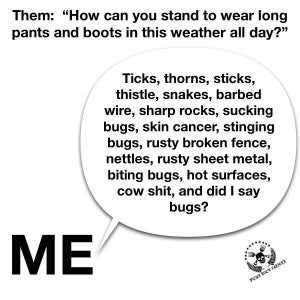Ticks suck! Sorry to be so blunt, but it’s the truth. Ticks, once limited to the northeast region of the United States, have now permeated many other regions of the U.S., and with them come tickborne diseases that cost the healthcare system up to $1.3 billion a year to treat. Exposure to ticks can happen anywhere — from backyards to parks to agricultural fields.
Agricultural workers who spend significant time outdoors are at great risk for exposure to ticks. Ticks are considered vectors since they carry diseases that they transmit to other organisms, including include Lyme disease, Rocky Mountain Spotted fever, Powassan virus, anaplasmosis, tularemia, ehrlichiosis, heartland virus, and alpha-gal syndrome.
In the first year of a two-year study by University of Illinois researchers and Illinois Extension professionals, three prevalent tick species in Illinois were studied: deer tick, American dog tick, and lone star tick.
Based on previous studies, researchers want to better understand the level of knowledge and prevention practices used by farm staff.

Initial results were collected through on an online survey. Of those responding to date, 36 percent of farmworkers indicate they have a low level of knowledge about ticks, says Sulagna Chakraborty, ecology, evolution, and conservation biology doctorate candidate at University of Illinois Urbana-Champaign and researcher for the project.
The research also reveals:
- Source of Information on Ticks: Currently, 56 percent of farmers rely on friends and family for information about ticks and the diseases they carry; 48 percent rely on medical professionals; 40 percent rely on Extension educational efforts.
- Attitude: The survey indicates 38 percent of respondents expressed concern about tick-borne diseases.
- Practices: When a tick is embedded, 76 percent of respondents say they would use the recommended practice of removing the tick with tweezers; 42 percent remove with their hands; 8 percent would consult a physician.
- Prevention Measures: 90 percent of farmworkers surveyed do a self-check for ticks. “This is one of the simplest things one can do if going out of doors,” Chakraborty says.
Additional preventative measures that are recommended include wearing a hat, long sleeve shirts, and long pants; tucking pants inside boots; and wearing light-colored shirts. Only 2 percent of respondents indicated they use tick repellant, and only 10 percent wear permethrin-treated clothing, Chakraborty says. Nearly one-quarter of the farmworkers surveyed say they take no precautions.

Both livestock and companion animals that farmers may have are at risk for tick bites and tickborne diseases. Only 28 percent of respondents use tick repellent on their animals, the survey results indicate.
“By knowing the knowledge gap, we can provide specific training to fill the gap,” Chakraborty says.
According to Illinois Extension, climate change has prompted changes in ticks.
“Ticks are coming up with adaptations that allow them to overwinter the shorter cold season,” Chakraborty says, “and populations are expanding.”
Since 2006, the U.S. has experienced a 10-fold increase in the number of tick-borne illnesses, says Rebecca Smith, associate professor of epidemiology in the College of Veterinary Medicine’s Department of Pathobiology at Illinois.
“We’re finding ticks active in January and February where you would never have found them before,” Smith says. “With these warmer winters, ticks can come out of dormancy.
» Related: Tick prevention products for farmland and rural property
Farmers can adopt preventative practices that would protect them and their livestock and companion animals against tick bites and tickborne diseases.
“Tall grass is a perfect habitat for ticks,” Chakraborty says. Ticks climb high on the grass and wait to grab onto something.
“Invasive plants also harbor ticks,” Smith says, “so being proactive to get rid of invasive plants such as honeysuckle and barberries can be effective.”
Controlled burns also help decrease tick populations.
The second phase of the study will assess Extension professionals’ level of awareness regarding ticks and the diseases they carry, then provide training to fill the knowledge gap.


